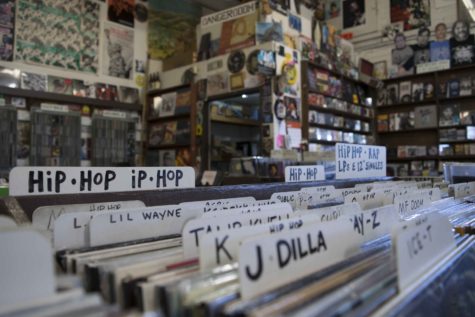It’s a culture. It’s a revolution. It’s a lifestyle birthed from political, economic and social oppression. It’s hip-hop.
For nearly five decades hip-hop and rap culture have been major influences on pop-culture in America. From the birth of hip-hop with Kool Herc and Grandmaster Flash and the Furious Five as well as Afrika Bambaataa and the rest of Zulu Nation, hip-hop culture transcended into a glamorous renegade form of expression with no limits.
The emergence of gangsta rap in the mid to late 1980s gave hip-hop a unique voice as artists began telling their stories of daily hardships in the inner cities.
With the help of groups like N.W.A. and artists like Ice-T, gangsta rap was established as a dominant form of musical expression in pop-culture. As this hip-hop subgenre took over the culture in the 80s and 90s, the music industry created a stereotype of thuggish masculinity, selling an image of “gangsta mentality” to promote hip-hop in the mainstream media, explaining why the 90s were filled with baggy jeans, tall-tees and bandanas
“You wouldn’t normally think that would make it in the mainstream but it started making money. At some point around the time gangsta rap emerged and started making a lot of money the industry embraced a formula and stereotype for rappers that should be kind of thuggish and very hyper-masculine,” says Dr. Amanda Morrison, coordinator of the intercultural center at Santa Rosa Junior College’s Petaluma campus.
In the early 2000s rap and hip-hop shifted towards a more rhythmic and stylish sound. Groups such as Outkast, Destiny’s Child and Atmosphere, and artists like Nelly, Andre 3000 and Kanye West began expolring new realms of rap and hip-hop.
Although hip-hop and rap began to change towards more of a mainstream sound, the roots of hip-hop culture roots never left the music. Fashion, beats, dance, lyrics and art have always been a part of the culture, no matter what sub-genre of hip-hop or rap one talks about. Artists such as 50 Cent, T.I., Nas and Eminem reinvented the culture and sound of gangsta rap by conveying lyrical messages about social and political injustice.
Since the mid 2000s, rap has again gone through dramatic changes. Popular rap went from Kendrick Lamar, J. Cole and Lil Wayne to Lil Yachty, Lil Uzi Vert and 21 Savage in about five to seven years. Emerging from this shift in hip-hop and rap music was the sub-genre “Trap Rap.” One major artist to start today’s trap sound is Future, who released Pluto in 2012, which featured a new auto-tuned style of rap with explicit lyrics semi-difficult to understand. With the release of his 2014 album Honest, Future skyrocketed into the rap limelight, bringing trap music with him and allowing many new young artists to follow.
“Future created his own sounds and so many people have bit off that and when they bite off him they usually sound better,” said Paige Raymond, former SRJC student and local hip-hop/rap artist who has worked with artist such as Too Short and Coolio-da-undadogg.
With the trap music scene taking over, the home of hip-hop and rap culture shifted to Atlanta. New artists and producers are emerging every day and catching popularity quickly as rap culture and its music changes.
Raymond hopes to make a big name for herself by establishing her own sound and image as a white female rapper, resisting rap and hip-hop culture stereotypes.
“As a woman in general, doesn’t matter the race, they test you more,” she said, “It might be I have all the talent in the world, but I’m not going to make it because they’re just not ready.”
Now the question is: What will hip-hop and rap have in store for us next?
New albums check out: HNDRXX by Future, Boss Up by Iamsu!, S.T.S.A. 2 by Clyde Carson, Culture by Migos and I decided by Big Sean.

The Last Record Store is filled with musical gems including some of hip hop’s best.



